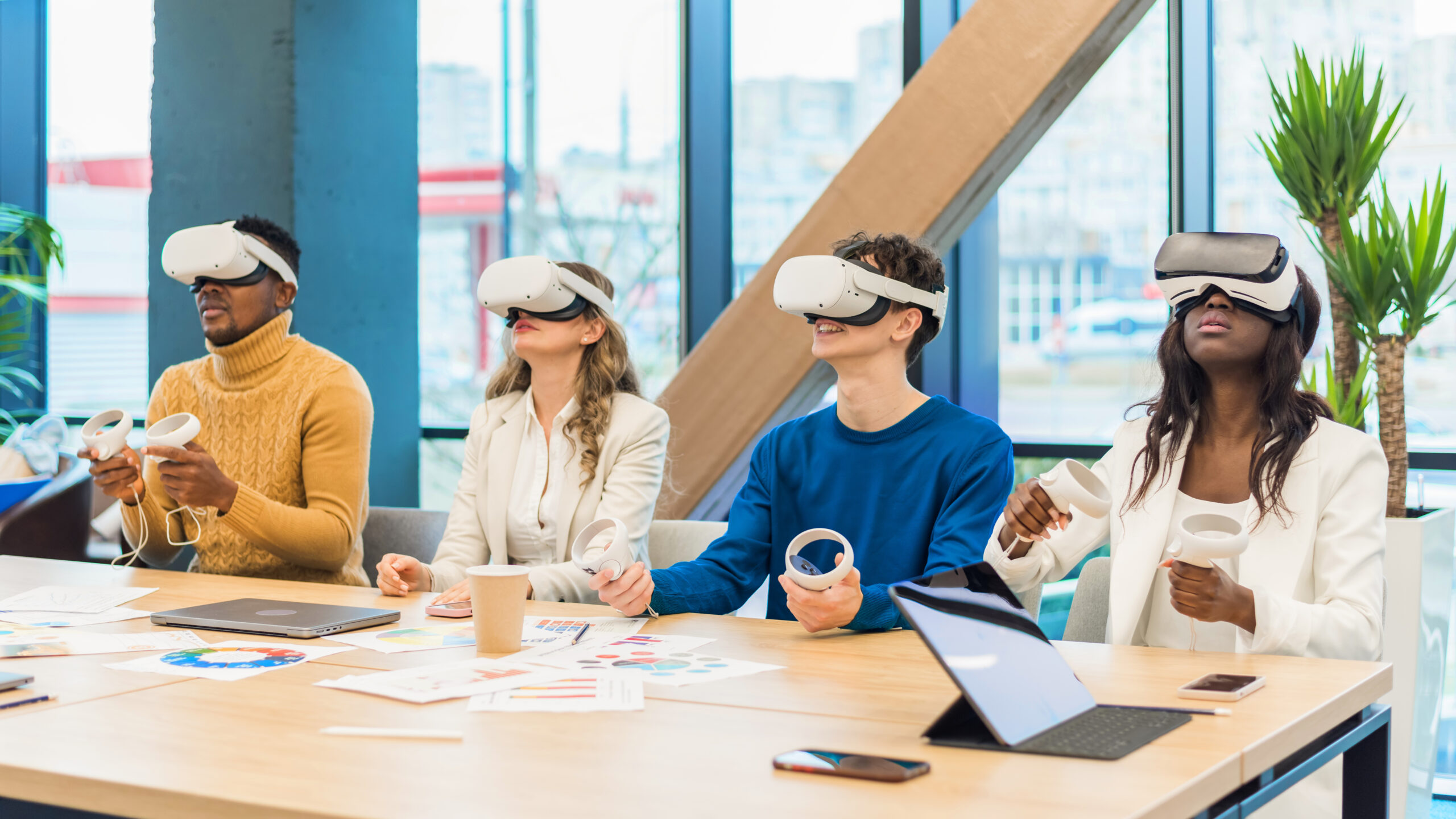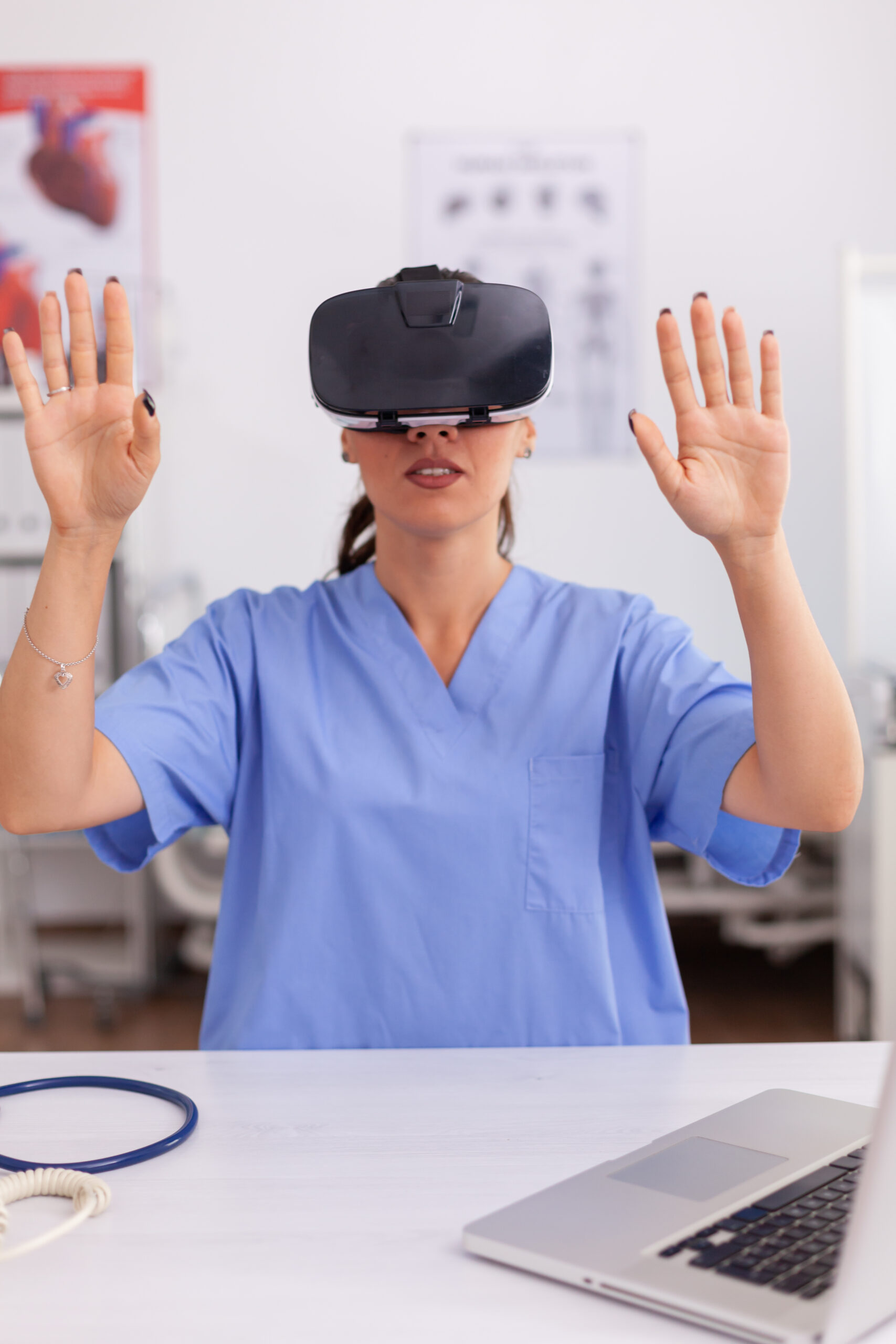Technology
Technology in the simulation provides realistic, safe, and immersive learning experiences, allowing trainees to practice, learn, and master skills in a controlled environment. It offers flexibility, objective assessment, cost-effectiveness, and opportunities for research and innovation. By harnessing technology, simulation has become a powerful tool for education, training, and performance improvement in diverse domains.
EEDUSIM aims to develop cutting-edge technology that will revolutionize simulation not only for this project but also for all future courses.
Virtual Campus
The virtual campus functions as a central hub, encompassing theoretical content and simulation protocols. With unique logins and passwords, learners can effortlessly navigate the platform and track their course progress. Moreover, the dedicated project platform provides open access to all project-related information, including the preparation, development, and delivery of course materials by partner institutions. The primary goal of this platform is to ensure transparency and facilitate global access to top-notch educational resources for trainers, regardless of their involvement in the pilot or full course.
VR Simulation Platform
Our cutting-edge VR platform revolutionizes healthcare education and simulation by providing a dynamic and immersive learning environment. It transports students into realistic clinical scenarios, enhancing critical thinking and problem-solving skills. The platform allows active participation, offering instant feedback and assessments for rapid skill development. It promotes accessibility and inclusivity, enabling students worldwide to access high-quality training. Collaboration and interprofessional education are encouraged through team-based simulations. In summary, our VR platform redefines healthcare education through virtual reality, benefiting learners and educators alike.
Simulation Cases
Polytrauma Simulation
During the polytrauma simulation, participants are presented with a realistic scenario where a patient has sustained multiple injuries across different body systems.
The simulation aims to recreate the chaotic and high-stress environment typically encountered in a trauma setting.
Cardiorespiratory Simulation
During a cardiorespiratory simulation, participants are presented with realistic scenarios that involve cardiac or respiratory emergencies, such as cardiac arrest.
To enhance the simulation performance, we incorporate various variables and cutting-edge technology, such as hand tracking, to create a more comprehensive and realistic experience.
Mental Health Simulation
The simulation aims to recreate the complex and nuanced dynamics of mental health conditions, allowing healthcare providers to practice and improve their assessment, intervention, and communication skills.
By providing exposure to realistic scenarios and allowing for repeated practice, simulations help build confidence and competence in managing mental health conditions.
Innovation
The VR platform is set to revolutionize the way we approach virtual reality education and simulation, with new innovative features that take immersion and interactivity to the next level. Below we list some of the features that are developed exclusively for the EEDUSIM project:
– The platform incorporates two-way voice recognition. This feature enables teachers to actively support and monitor students throughout their entire learning process.
– VR platform incorporates advanced hand tracking technology for extended reality (XR) experiences. This means that users can utilize their hands and gestures as natural input methods, eliminating the need for additional controllers or devices.
– Real-time feedback is another integral feature of our VR platform. Throughout the simulations, participants receive immediate and actionable feedback on their actions and decision-making




